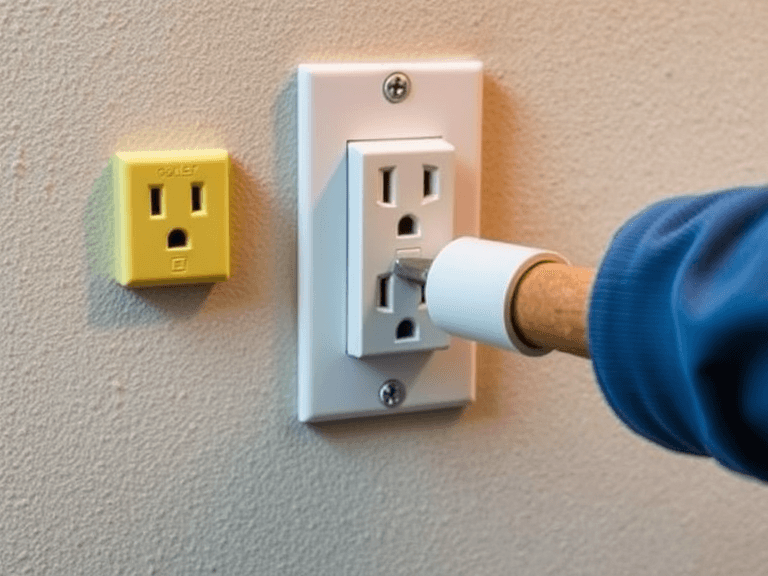Electric outlets are the unsung heroes of modern living. From powering your essential appliances to keeping your gadgets charged, outlets are an integral part of your home’s electrical system. While they often go unnoticed, the importance of correctly installing and maintaining outlets cannot be overstated. This guide by ZZ the HandyMan will walk you through the essentials of outlet installation, ensuring safety, functionality, and compliance with electrical codes.
Why Proper Outlet Installation Matters
Improperly installed outlets can lead to various issues, from minor inconveniences to severe safety hazards like electrical shocks, fires, or appliance damage. Ensuring that outlets are installed correctly provides peace of mind, optimal performance, and long-term reliability.
Tools and Materials You’ll Need
Before you begin, gather the necessary tools and materials:
- Screwdrivers (flathead and Phillips)
- Voltage tester
- Wire stripper
- Needle-nose pliers
- Electrical tape
- Outlet box
- Grounding screws
- New outlet and wall plate
- Cable clamps (if required)
Safety gear like insulated gloves and goggles is also essential to protect yourself during the installation process.
Step-by-Step Guide to Outlet Installation
Step 1: Turn Off the Power
Safety first! Locate your home’s electrical panel and turn off the circuit breaker corresponding to the area where you’re working. Use a voltage tester to ensure the power is completely off before proceeding.
Step 2: Choose the Right Outlet
Different types of outlets serve different purposes. Common options include:
- Standard Outlets: Suitable for general household appliances.
- GFCI Outlets: Ideal for kitchens, bathrooms, and outdoor areas to protect against electrical shocks.
- AFCI Outlets: Required in many new constructions to prevent arc faults.
- USB Outlets: Convenient for charging devices without bulky adapters.
Select an outlet that meets your specific needs and complies with local electrical codes.
Step 3: Install the Outlet Box
If you’re adding a new outlet, start by installing an outlet box. Cut a hole in the wall at the desired location and secure the box inside. Ensure the box is flush with the wall surface to accommodate the wall plate later.
Step 4: Prepare the Wires
Carefully pull the electrical cable through the outlet box, leaving about six inches of wire exposed. Strip about ¾ inch of insulation from each wire using a wire stripper. You should have three wires:
- Black (hot wire)
- White (neutral wire)
- Bare or green (ground wire)
Step 5: Connect the Wires
- Ground Wire: Attach the bare or green wire to the green grounding screw on the outlet.
- Neutral Wire: Connect the white wire to the silver terminal screw.
- Hot Wire: Attach the black wire to the brass terminal screw.
Ensure all connections are secure, and no exposed wire extends beyond the screws. Use electrical tape to cover the terminals for added safety.
Step 6: Mount the Outlet
Carefully push the wires back into the outlet box, ensuring they are not pinched or crimped. Secure the outlet to the box using mounting screws. Attach the wall plate over the outlet and fasten it with a screw.
Step 7: Test the Outlet
Turn the power back on at the circuit breaker. Use a voltage tester or plug in a small appliance to ensure the outlet functions correctly. If the outlet doesn’t work, double-check the wiring and connections.
Common Mistakes to Avoid
- Not Turning Off Power: Skipping this step can lead to severe electrical shocks.
- Loose Connections: Ensure wires are tightly secured to prevent arcing or overheating.
- Ignoring Code Requirements: Always follow local electrical codes and regulations to ensure safety and compliance.
- Overcrowding the Outlet Box: Overcrowded boxes can lead to overheating and pose a fire risk.
When to Call a Professional
While DIY outlet installation can save money, certain situations call for professional expertise:
- Installing outlets in complex wiring systems.
- Adding outlets in high-risk areas like wet zones.
- Troubleshooting persistent electrical issues.
ZZ the HandyMan specializes in safe and efficient outlet installations. With years of experience, we’re equipped to handle all your electrical needs, ensuring safety and satisfaction.
Maintenance Tips for Long-Lasting Outlets
- Inspect Regularly: Check outlets for signs of wear, such as discoloration, sparks, or loose connections.
- Avoid Overloading: Use power strips or additional outlets to distribute electrical load evenly.
- Upgrade Outlets: Replace outdated or damaged outlets promptly to prevent potential hazards.
- Use Tamper-Resistant Outlets: Especially in homes with children, these outlets prevent accidental shocks.
Conclusion
Installing an outlet might seem like a straightforward task, but attention to detail and adherence to safety measures are critical. By following this guide, you can confidently install outlets and enhance your home’s electrical system. For complex installations or professional assistance, ZZ the HandyMan is just a call away. Let us handle your electrical needs, ensuring quality workmanship and peace of mind. Contact us today for expert outlet installation and other handyman services!


